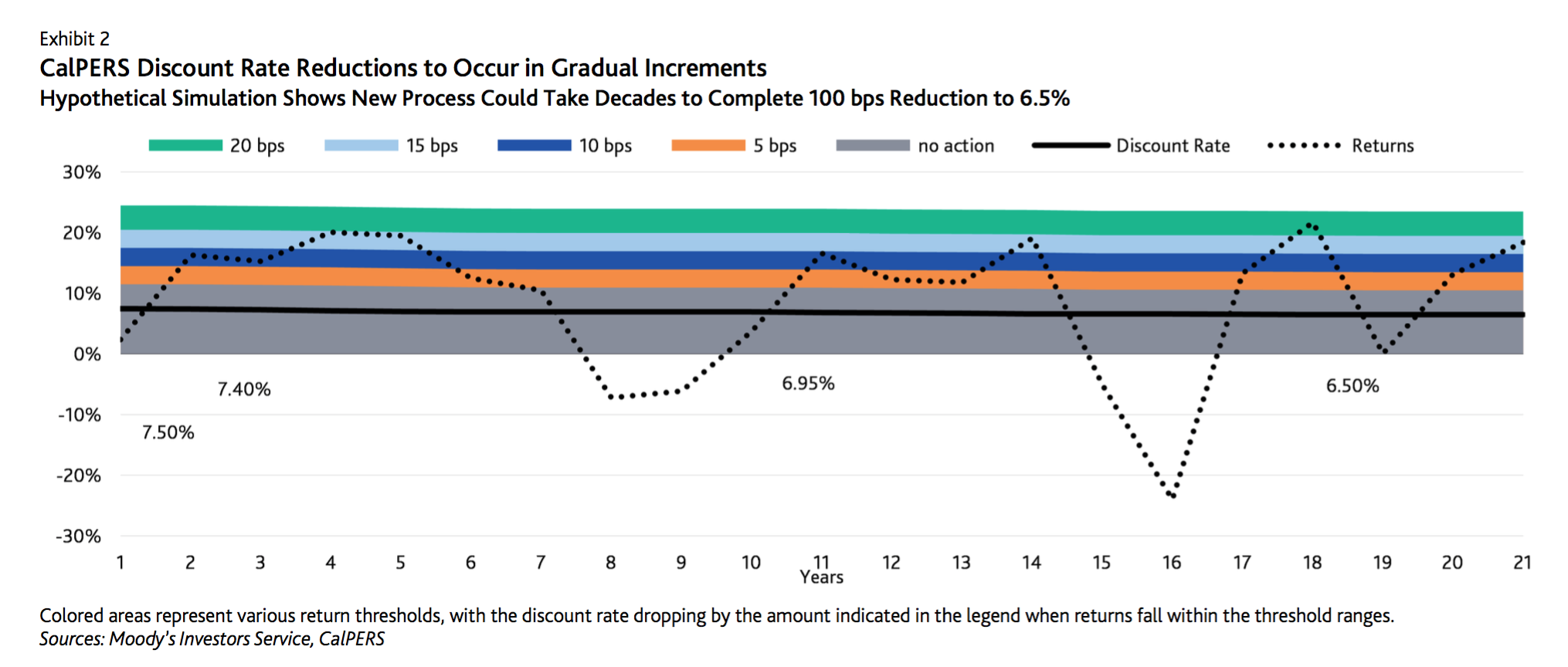The California Public Employees’ Retirement System’s (CalPERS) new de-risking policy to reduce discount rates could result in sharp, short-term falls in performance—and it still falls behind corporate pensions’ programs, according to Moody’s.
The largest American public pension plan announced in November its new risk mitigation policy would gradually reduce the assumed rate of return to 6.5% from the current 7.5% as plan demographics continue to mature.
“This process will take years to fully implement, and a sharp fall in CalPERS’ asset performance could impact participating government fiscal positions.”CalPERS’ goal, it said, is to not only lower risk and volatility, but also to become fully funded and keep employer contribution rates consistent. The $300 billion plan is currently 77% funded, according to its website.
The ratings agency said while the shift from asset volatility risk is a “credit positive” for the state and local governments, it still leaves the fund vulnerable to “sharp asset declines” even before the policy’s implementation.
“This process will take years to fully implement, and a sharp fall in CalPERS’ asset performance could impact participating government fiscal positions,” Moody’s said. Its calculations revealed the fund’s discount rate decline to 6.5% would likely occur “very gradually,” over approximately 20 years.
In addition, the ratings agency argued that contributions would remain high as the drop in discount rate would likely “push up liabilities and normal costs.”
A CalPERS spokesperson said in response that the fund is “acutely aware” of municipalities’ concerns about contribution rate increases, but also that the new policy is a “balanced approach” that would reduce contribution rate volatility over time.
The fund previously defended the de-risking program following criticism in local media, saying the plan was a “result of an 18-month analysis that looked at several strategies to mitigate risk. We sought input from leaders representing our members, as well as cities and counties across the state who belong to our system. Industry experts provided guidance and our professional staff provided their best recommendations.”
CEO Anne Stausboll also stated in November the policy “recognizes the fiscal constraints on California’s local agencies and represents a milestone for CalPERS.”
Despite these efforts, Moody’s said CalPERS’—and other public pensions’—de-risking programs lag the private sector.
“Many corporations have either transitioned to defined contribution plans, or have defined benefit pensions with fewer volatile investments and far lower discount rates,” the ratings agency said.
According to the report, the median public plan discount rate for Moody’s-rated funds surpassed 7.6% in the 2014 fiscal year, compared to 4% for a sample of 100 large corporate plans.
Public plans also continue to allocate to more volatile asset classes than their corporate counterparts, Moody’s concluded, leaving them exposed to greater expected return volatility.

Related: CalPERS Targets 100% Funding with Discount Rate Changes & CalPERS Pushes Ahead in Fight to Cut Costs
